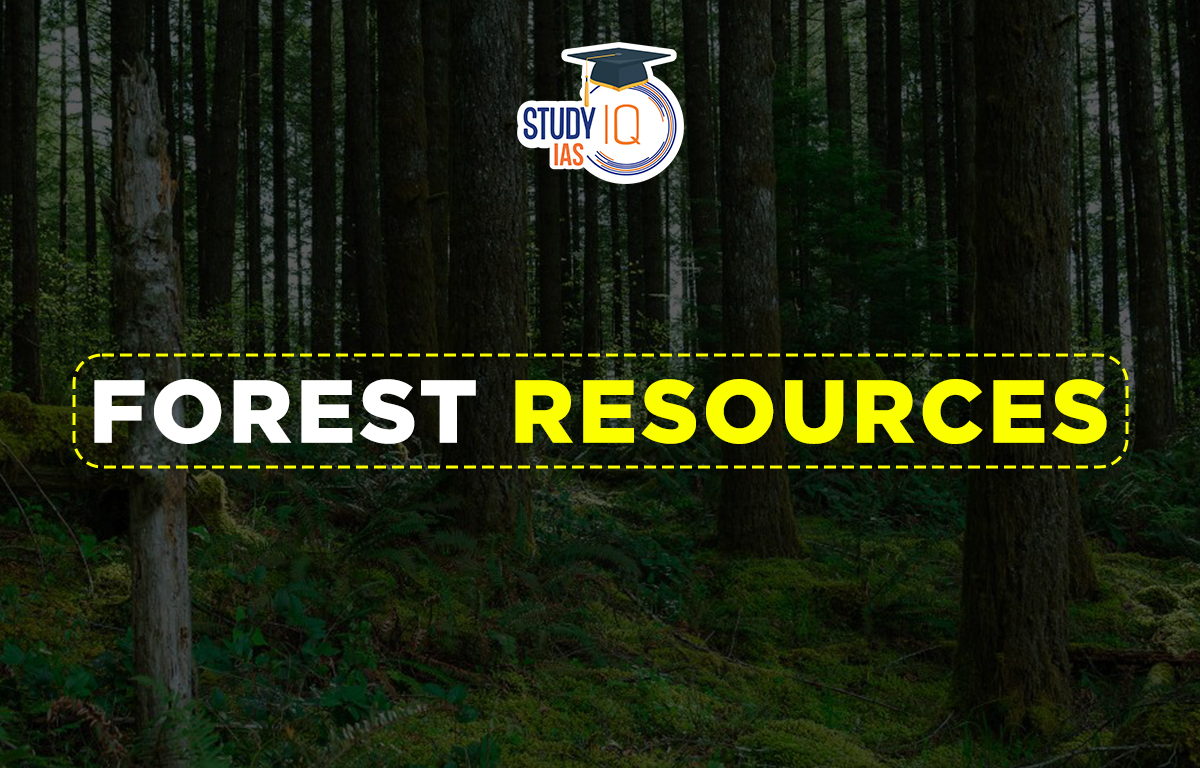Table of Contents
Forest Resources
The different resources that forests provide, like wood, timber, bushmeat, and medicines, are called forest resources. A forest is a thick area filled with trees and other plants covering a large piece of land. It is a Large ecosystem, which means it is a community of plants and animals that interact with each other and their environment.
Five countries Brazil, Canada, China, Russia, and the United States hold more than half of the world’s forests. Most forests are found in tropical areas (about 45%), followed by boreal, temperate, and subtropical regions. Forests play a huge role in life on our planet. They protect many different kinds of plants and animals and help improve the climate. Because of this, forests are very valuable in many ways. They are important for the economy, the environment, and culture.
Read about: Energy Resources
Types of Forest Resources
India is one of the world’s seventeen mega-biodiverse countries, home to 7% of global biodiversity. Many plant and animal species found in India exist nowhere else. Indian forests include tropical wet evergreens, semi-evergreens, deciduous, tropical dry deciduous, subtropical pine forests, alpine, dry alpine scrub, temperate montane forests, swamps, mangroves, and thorn forests.
| S.No. | Types of Forest Resources |
| 1. | Tropical Evergreen Forests
|
| 2. | Tropical Deciduous Forests (Monsoon Forests)
|
| 3. | Thorn Forests |
| 4. | Montane Forests
|
| 5. | Littoral/Swamp Forests |
Read about: Mangrove Forests in India
Forest Resouces Economic Significance
Forests are essential, it provide products such as food, fodder, lumber, latex, resins, waxes, steroids, lubricants, flavorings, dyes, incense, and fibers. Many of these can be harvested sustainably, adding long-term value to forests. The economic value of forest biodiversity is huge. The plants and animals in forests are vital for things like medicines and insecticides. Forests also help stabilize the environment, like preventing soil erosion, which saves money on erosion control.
Read about: Minerals
Forest Resources Ecological Significance
Forest ecological services are natural processes that help humans in many ways. Services include storing carbon, protecting water sources, and conserving biodiversity. Trees take in carbon dioxide and release oxygen through photosynthesis, helping to keep the atmosphere clean and suitable for life.
Forests also help manage water by absorbing rain and reducing flooding during heavy storms. They provide habitats for many species, making them vital for biodiversity. For example, forests in Bangladesh are home to around 5,700 types of plants, including 300 kinds of trees.
Forest Resources Socio-Cultural Significance
Millions of people live in forests around the world and depend on them for their survival. Many also have deep cultural and spiritual connections to the forests. Indigenous communities have a strong knowledge of how to use and take care of forest resources because of their long history with them. For instance, woodcutters and honey collectors in the Sundarbans have traditional practices that protect young bees, ensuring they are never harmed.
Forest Resources Important Facts for UPSC
- The (Seventh Schedule) of the Indian Constitution’s Concurrent List includes forests.
- Forests and the protection of wild animals and birds were moved from the State to the Concurrent List through the 42nd Amendment Act of 1976.
- Every citizen has a fundamental responsibility to preserve and enhance the natural environment, including forests and wildlife, according to Article 51 A (g) of the Constitution.
- The State must work to safeguard the nation’s forests and wildlife as well as the environment, according to Article 48 A of the Directive Principles of State Policy.
- The National Forest Policy, 1988, which has environmental harmony and subsistence at its core, currently governs India’s forests.


 Story of Meera Bai and Her Devotion For ...
Story of Meera Bai and Her Devotion For ...
 Desert Climate, Distribution, Climatic C...
Desert Climate, Distribution, Climatic C...
 Deserts of India Map, Features of Thar D...
Deserts of India Map, Features of Thar D...





















